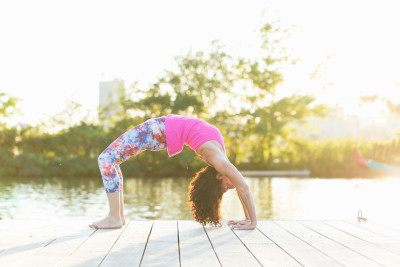
If I had to pick one posture out of a standard sequence about which I get the most questions, I’d say it’s Wheel Pose. Why? I think this is the pose that most often appears at the energetic height of the sequence. This is not always the case if you work towards a different peak pose, but let’s just say that if you do include Wheel in your sequencing, it is often the peak posture. Students can feel that you’re building up to something and when it arrives, they are ready to give it their all. Students often explain to me a feeling of defeat because they can’t get into the pose and are unsure why.
Well, let’s start out by saying there is no pot of gold found at the end of any pose. This means that to attach your feelings of accomplishment to any one posture is a futile effort. There will always be another pose you yearn to do and while it’s great to have  “#yogagoals ” I always suggest to try to find enjoyment in the fundamentals of the practice: breath, foundation, mindfulness, gaze, building overall strength and flexibility and most of all, meditation. But I get it; we want to be able to access certain postures and like to have goals.
So, having said that, let me say that there are many pieces that go into getting into Wheel Pose and I go into them in detail in my latest online course, “Learn The Anatomy, Practice It, Teach It.” Today, I’m going to give you one piece from the overall strategy and that has to do with moving through your thoracic spine.
Many people know that the thoracic spine is the part of the spine that includes the rib cage and the 12 ribs and thoracic vertebrae:
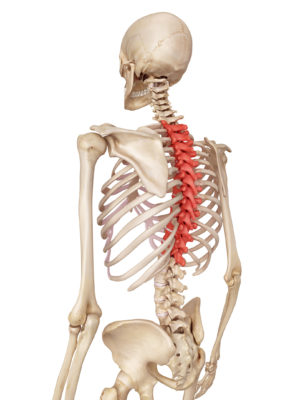
This part of the spine is very stiff because of the relationship between each vertebra and the corresponding rib. Plus, the position of this part of the spine and ribs creates the rib cage, which protects the heart and lungs with it’s stiff, strong structure. So, in order to move into Wheel Pose, we have to get some movement out of this fairly stiff part of the spine.
There are muscles that help us rotate the spine and muscles that help us move from side to side. Even though in Wheel Pose, we’re moving into spinal extension, it can be helpful to get some side-to-side rotational movements happening before we move into that full extension of the posture because any increase in mobility there will help.
When we look at rotational movements we can make, two preliminary postures come to mind:
Prayer Twist

Twisting Crescent Lunge
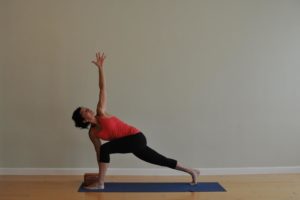
When we look at more accessible spinal extension movements we can make, 3 postures come to mind:
Camel
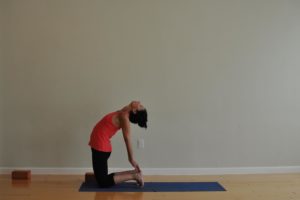
Upward Dog
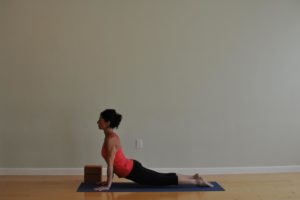
Fish Pose

One of the major muscles that helps us extend our spine is the Erector Spinae group:

You can see how these muscles, highlighted here in red, help us stand erect due to their shape but as they contract and we add the additional power of the arms and hips, they help us extend our spine.
So, in order to help your students tap into their thoracic spine, along with other techniques I mention in my course, helping them access their thoracic spine can be key. One thing I like to offer is supported Fish Pose on a block before moving into backbends like Bridge and Wheel. In this supported shape, students can get a sense of what it feels like to move from their thoracic spine.
For my online course on this topic and two other topics, please see:
Bare Bones Yoga Online Yoga Anatomy Courses

Happy Backbending!
